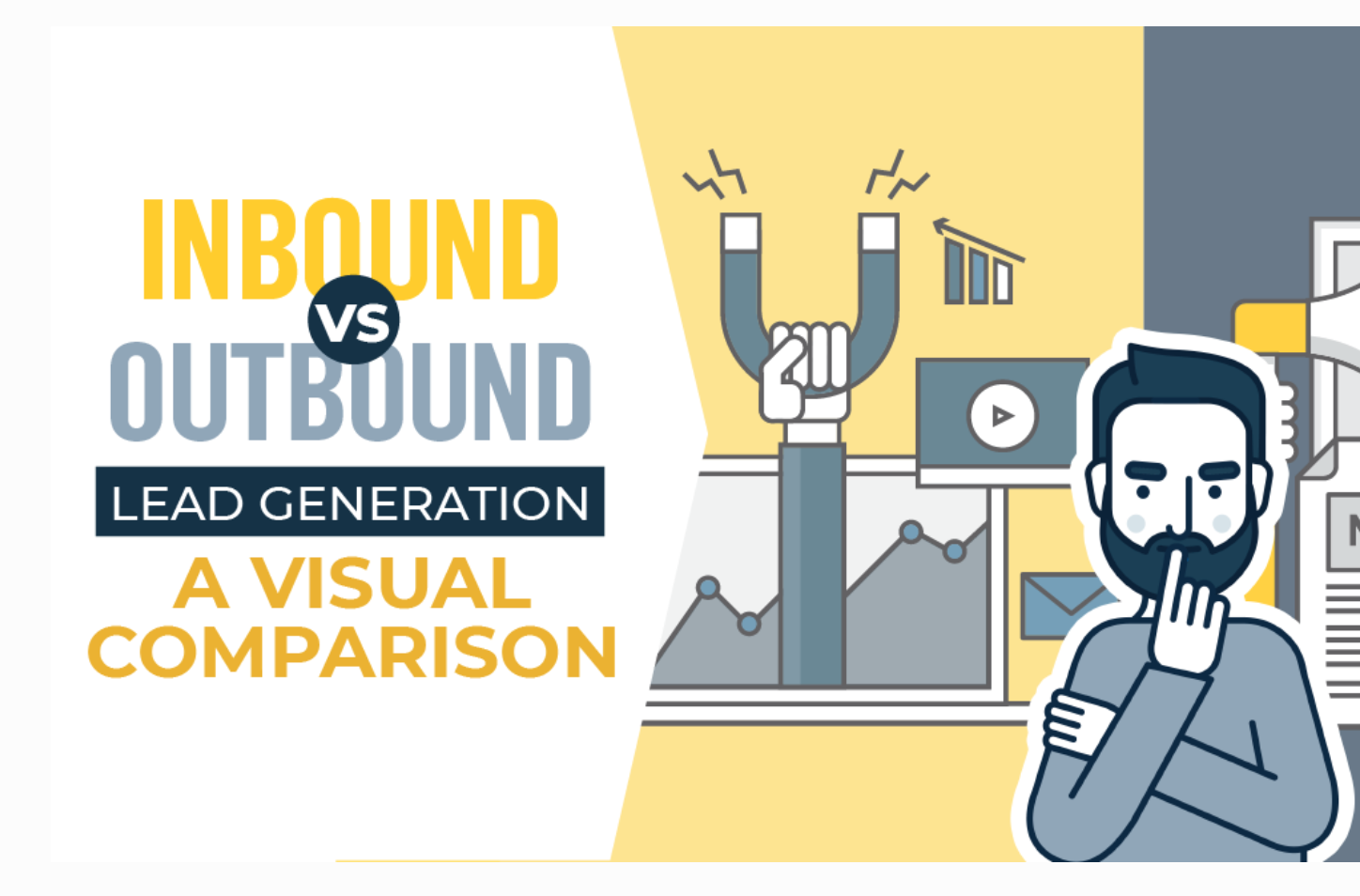Inbound vs Outbound
Today, businesses depend on lead generation to bring in new customers. Without this, their sales funnels and ability to generate more profits go out the window. Since it is the age of digital, businesses must find the right approach to capture their target market, draw in prospects, and turn them into customers. To do so, there are two primary approaches to lead generation—inbound lead generation and outbound lead generation.
You must understand what both techniques can do to determine your business’s growth opportunities as each of them has its advantages and purposes. To get started, let’s define what inbound and outbound lead generation mean.
What’s the Difference Between Inbound Lead Generation and Outbound Lead Generation?
Inbound lead generation focuses on attracting the target audience using valuable information. This technique tries to capture those who are already aware of your brand, what you offer, and what you do with content that provides highly useful resources, helping to pique their interest or address their questions. Inbound marketing’s common strategies involve gated content like e-books and whitepapers, podcasts, and webinars.
Meanwhile, outbound marketing entails marketers reaching out to their target market. Their goal is to spread the brand’s message in different ways using digital-based techniques. Before, outbound lead generation’s traditional strategies include print and TV advertising as well as cold calling. Today, outbound lead generation may involve digital pop-up ads and banners. This approach essentially pushes your brand’s message to your audience while they consume online content. Thus, outbound lead generation is also known as “interruptive marketing.”
Now that you know what both approaches mean, here’s a visual graph that breaks down the similarities and differences between inbound and outbound marketing, along with useful information on how both methods can bring value to your lead generation strategies. Let’s get right into it!

Author Bio

Samantha is an Online PR Specialist at Spiralytics, a full-service agency that helps grow businesses through performance marketing and data science. As a young communications professional, she brightens the brands she handles with her creative and insight-driven thinking in different online and offline campaigns. Outside the world of digital marketing, you may find her reading, writing, or traveling to a galaxy, far, far away.
What Is WooCommerce Product Slider and Why Your Store Needs It
Why Do Product Images Matter So Much in Online Stores? When someone visits an online store the…
0 Comments9 Minutes
How to Streamline Your Customers’ Shopping Experience?
The goal for any online store is to make shopping as smooth as possible. When visitors move…
0 Comments8 Minutes
Strengthening Brand-Customer Relationships Through Gamified Loyalty Programs
Creating lasting connections with customers has become increasingly vital as the marketplace grows…
0 Comments6 Minutes
How to Use SEO and SEA Together in Search Engine Marketing
In digital marketing, search engine marketing (SEM) plays a critical role in improving online…
0 Comments10 Minutes
Content Marketing Growth Hacks: Real Shortcuts to Drive Traffic
Are you still lagging in content marketing? Sticking to these old strategies seems…
0 Comments10 Minutes
How to Build a Strong Local Following Using Social Media Marketing
In the days of likes, shares, and stories, local businesses have a golden opportunity to create…
0 Comments9 Minutes
Why WooCommerce is the Best Choice for Your Online Store?
WooCommerce stands out as a top option for anyone looking to build an online store. This platform…
0 Comments8 Minutes
How to Use AI-Powered SEO Tools for WordPress eCommerce
SEO is a critical factor in the success of any e-commerce WordPress store. As competition…
0 Comments11 Minutes








